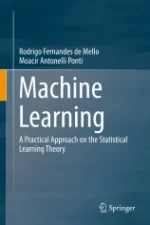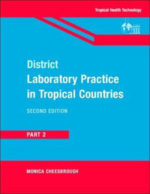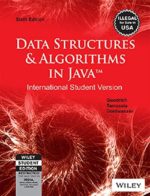-
Machine Learning A Practical Approach on the Statistical Learning Theory
KSh 19,000.00This book presents the Statistical Learning Theory in a detailed and easy to understand way, by using practical examples, algorithms and source codes. It can be used as a textbook in graduation or undergraduation courses, for self-learners, or as reference with respect to the main theoretical concepts of Machine Learning. Fundamental concepts of Linear Algebra and Optimization applied to Machine Learning are provided, as well as source codes in R, making the book as self-contained as possible.
It starts with an introduction to Machine Learning concepts and algorithms such as the Perceptron, Multilayer Perceptron and the Distance-Weighted Nearest Neighbors with examples, in order to provide the necessary foundation so the reader is able to understand the Bias-Variance Dilemma, which is the central point of the Statistical Learning Theory.
Afterwards, we introduce all assumptions and formalize the Statistical Learning Theory, allowing the practical study of different classification algorithms. Then, we proceed with concentration inequalities until arriving to the Generalization and the Large-Margin bounds, providing the main motivations for the Support Vector Machines.
From that, we introduce all necessary optimization concepts related to the implementation of Support Vector Machines. To provide a next stage of development, the book finishes with a discussion on SVM kernels as a way and motivation to study data spaces and improve classification results.
-
Plant Systematics 3rd Edition
KSh 10,220.00Plant Systematics, Third Edition, has made substantial contributions to plant systematics courses at the upper-undergraduate and first year graduate level, with the first edition winning The New York Botanical Garden’s Henry Allan Gleason Award for outstanding recent publication in plant taxonomy, plant ecology or plant geography. This third edition continues to provide the basis for teaching an introduction to the morphology, evolution and classification of land plants. A foundation of the approach, methods, research goals, evidence and terminology of plant systematics are presented, along with the most recent knowledge of evolutionary relationships of plants and practical information vital to the field.
In this new edition, the author includes greatly expanded treatments on families of flowering plants, as well as tropical trees (all with full-color plates), and an updated explanation of maximum likelihood and Bayesian inference algorithms. Chapters on morphology and plant nomenclature have also been enhanced with new material.
- Covers research developments in plant molecular biology
- Features clear, detailed cladograms, drawings and photos
- Includes major revisions to chapters on phylogenetic systematics and plant morphology
-
DISTRICT LAB PRACT PART 2
KSh 6,000.00This new edition includes an update on HIV diseaseAIDS, recently developed HIV rapid tests to diagnose HIV infection and screen donor blood, and current information on antiretroviral drugs and the laboratory monitoring of antiretroviral therapy. Information on the epidemiology and laboratory investigation of other pathogens has also been brought up to date. Several new, rapid, simple to perform immunochromatographic tests to assist in the diagnosis of infectious diseases are described, including those for brucellosis, cholera, dengue, leptospirosis, syphilis and hepatitis. Recently developed lgM antibody tests to investigate typhoid fever are also described. The new classification of salmonellae has been introduced. Details of manufacturers and suppliers now include website information and e-mail addresses. The haematology and blood transfusion chapters have been updated, including a review of haemoglobin measurement methods in consideration of the high prevalence of anaemia in developing countries.
-
Data Structures and Algorithms in Java 6th Edition
KSh 2,000.00The design and analysis of efficient data structures has long been recognized as a key component of the Computer Science curriculum. Goodrich and Tomassia’s approach to this classic topic is based on the object-oriented paradigm as the framework of choice for the design of data structures. For each ADT presented in the text, the authors provide an associated Java interface. Concrete data structures realizing the ADTs are provided as Java classes implementing the interfaces. The Java code implementing fundamental data structures in this book is organized in a single Java package, net.datastructures. This package forms a coherent library of data structures and algorithms in Java specifically designed for educational purposes in a way that is complimentary with the Java Collections Framework.
-
Why Do Crabs Walk Sideways?
KSh 695.00Covering everything from scuttling crabs to elephant seals, this title is ideal for young readers. Activity panels give tips on further learning and a fun quiz at the back tests children on what they have read.
-
Why Do Kestrels Hover?
KSh 695.00Covering everything from eagles to owls, this title is ideal for young readers. Activity panels give tips on further learning and a fun quiz at the back tests children on what they have read
-
Genetics Essentials: Concepts and Connections
Derived from his popular and acclaimed Genetics: A Conceptual Approach, Ben Pierce’s streamlined text covers basic transmission, molecular, and population genetics in just 18 chapters, helping students uncover major concepts of genetics and make connections among those concepts as a way of gaining a richer understanding of the essentials of genetics.
With the new edition, Ben Pierce again focuses on the most pervasive problems for students taking genetics―understanding how genetics concepts connect to each other and developing solid problem solving skills. And with this edition, Genetics Essentials is available as a fully integrated text/media resource with SaplingPlus, an online solution that combines an e-book of the text, Pierce’s powerful multimedia resources, and Sapling’s robust genetics problem library







